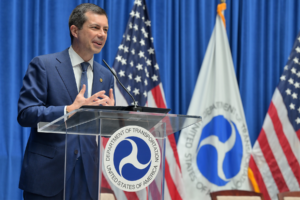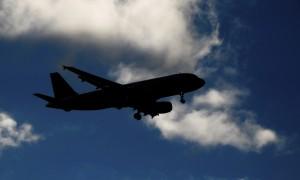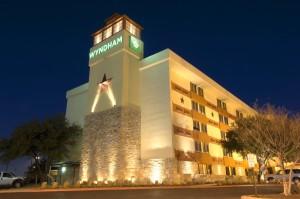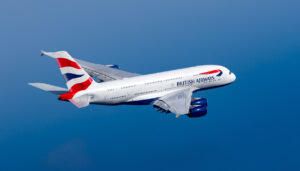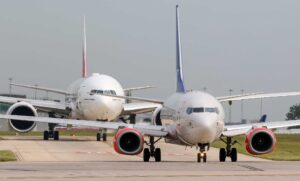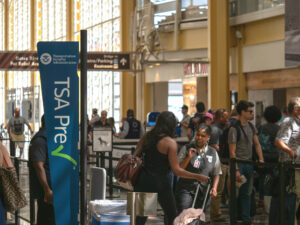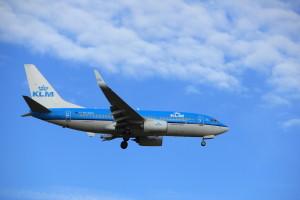Go Around: Pilots ignoring Tower questions
#1
FlyerTalk Evangelist
Original Poster
Join Date: Apr 2009
Location: Bye Delta
Programs: AA EXP, HH Diamond, IHG Plat, Hyatt Plat, Marriott Plat, Nat'l Exec Elite, Avis Presidents Club
Posts: 16,273
Go Around: Pilots ignoring Tower questions
Idle curiosity on my part. After having flown nearly a million miles commercially, I experienced my first go around about two months ago, on an AA flight that was landing at LGA on a relatively clear day. Finally being able to check this off my airline bucket list, I was curious about the circumstances that led to it. A few minutes after going around, the captain came over the PA and said it was because "we lost some equipment on the ground". I downloaded the recordings from LiveATC. Nothing until "American XXXX, going around." The controller directed him back up, and also asked what the reason for the go around was. The pilots confirmed the instructions, but ignored the question on the go around. Twice more, the tower communicated with the pilots, who again confirmed the tower's instructions, but continued to ignore the question on the reason for the go around. Eventually the tower gave up and stopped asking. No aircraft before or after ours went around.
So here's what I'm curious about:
1. Likelihood that "we lost some equipment on the ground" was what actually caused the go around.
2. If they did lose some equipment on the ground, wouldn't it be proper to notify the tower of that?
3. Regardless of the reason for the go around, is it typical to ignore ATC questions like that? (And yes, I'm familiar with A-N-C.)
So here's what I'm curious about:
1. Likelihood that "we lost some equipment on the ground" was what actually caused the go around.
2. If they did lose some equipment on the ground, wouldn't it be proper to notify the tower of that?
3. Regardless of the reason for the go around, is it typical to ignore ATC questions like that? (And yes, I'm familiar with A-N-C.)
Last edited by javabytes; Jun 5, 2017 at 1:40 am
#2
FlyerTalk Evangelist

Join Date: Sep 2003
Location: San Antonio
Programs: DL DM, Former AA EXP now AY Plat, AC 75K, NW Plat, Former CO Gold, Hilton Diamond, Marriott Titanium
Posts: 27,042
it could be CYA or that they lost the ILS approach signal. Basically no way of knowing. No need to answer the question asked. In fact they were likely focused on doing their job, fly the plane. Unless ATC needs the info to help you fly, you focus on flying the plane.
#3
Moderator: American AAdvantage, Signatures
Join Date: Jan 2008
Location: London, England
Programs: UA 1K, Hilton Diamond, IHG Diamond Ambassador, National Exec, AA EXP Emeritus
Posts: 9,765
That's my guess as well. If the situation was abnormal, you'd normally have one pilot flying while the other is working a checklist or something similar. If they thought something had been lost, they may have been far more focused on flying and determining what happened.
#4
Join Date: Mar 2017
Programs: Does Non Rev count?
Posts: 588
Go Around's are a very busy time in the cockpit for us. To oversimplify things, the only thing we are truly required to do is fly the aircraft, then comply with ATC heading/altitude instructions. Once the airplane is properly configured and on the appropriate heading, then extraneous questions like reason for a GA can be relayed back to ATC. To many variables as to why this wasn't shared with ATC when asked, but most likely the crew was busy.
#5
Senior Moderator and Moderator: American AAdvantage & TravelBuzz
Join Date: Nov 2007
Location: BOS
Programs: AA EXP, Marriott Titanium
Posts: 10,417
As this topic is actually airline-agnostic, let's move this over to TravelBuzz for further discussion. Thanks!  /JY1024, AA & TravelBuzz co-moderator
/JY1024, AA & TravelBuzz co-moderator
 /JY1024, AA & TravelBuzz co-moderator
/JY1024, AA & TravelBuzz co-moderator
#6
Join Date: Nov 2005
Location: on the path to perdition
Programs: Delta, United
Posts: 4,786
Like JB, this past spring I too got my first go around also after nearly 1M miles. The pilot came on and did a nice job explaining what happened. The plane before us in the landing pattern had not exited the runway before we were about to touch down. As such, the pilot decided to go around. when we got off the plane I jokingly told the pilots I figured they just wanted more BIS time.
#7
FlyerTalk Evangelist
Join Date: Jul 2011
Location: RNO
Programs: AA/DL/UA
Posts: 10,775
I've flown about half a million miles and had two go-arounds. One at DEN because there was a plane still on the runway, and the other at HHH (Hilton Head Island, SC) because the ceiling was too low for the Dash-8. Actually we attempted two landings and then diverted to SAV for a van ride to HHH. The clouds weren't ridiculously low (otherwise there would have been no attempt in the first place presumably), but rather at the point where the pilot has to try it and if the runway isn't visible at some particular altitude, then wheels up and go around.
#8
Join Date: Sep 2011
Location: New Zealand
Programs: NZ*S plus various hotel programs
Posts: 945
Pilot priorities can easily be summarized by "aviate navigate communicate". Their main priority was to fly the place through the go around and then to navigate safely before communicating further. Whilst everyone outside the cockpit wants to know what is happening, this isn't the highest priority for the pilots.
#9
FlyerTalk Evangelist
Join Date: Jun 2005
Posts: 38,410
Pilot priorities can easily be summarized by "aviate navigate communicate". Their main priority was to fly the place through the go around and then to navigate safely before communicating further. Whilst everyone outside the cockpit wants to know what is happening, this isn't the highest priority for the pilots.
Their first priority is keeping the plane in the sky.
After that is dealt with then their priority is keeping the plane pointed in the right direction.
Only after that is dealt with do they talk.
The airspace they need for a go-around is normally clear anyway, they don't need to talk to ATC to avoid a mid-air on a go-around.
#10
Moderator: Hyatt; FlyerTalk Evangelist
Join Date: Jun 2015
Location: WAS
Programs: :rolleyes:, DL DM, Mlife Plat, Caesars Diam, Marriott Tit, UA Gold, Hyatt Glob, invol FT beta tester
Posts: 18,931
On the only go-around I've experienced, the FA made an announcement to the effect of, "as you have no doubt noticed, we have not in fact landed in XXX; I am sure the pilots will give us further info when their duties permit them to."
#11
Join Date: Oct 2016
Programs: Delta DM
Posts: 71
In addition to learning "aviate navigate communicate" we also learn that if an approach to landing is unacceptable in some way, going around is a safe and smart option. In general, the tower sees when you go around, informing them is a courtesy, and giving a reason is essentially unimportant when you need to get the plane back at a positive rate of climb.
#12
FlyerTalk Evangelist
Join Date: Nov 2001
Location: Wanting First. Buying First.
Programs: Lifetime Executive Diamond Platinum VIP with Braniff, Eastern, Midway, National & Pan Am
Posts: 17,492
You beat me to it. If the pilots are busy flying the plane they're not going to take time out to talk to ATC.
Their first priority is keeping the plane in the sky.
After that is dealt with then their priority is keeping the plane pointed in the right direction.
Only after that is dealt with do they talk.
Their first priority is keeping the plane in the sky.
After that is dealt with then their priority is keeping the plane pointed in the right direction.
Only after that is dealt with do they talk.
While there is a published missed approach procedure as part of instrument approaches, often when ATC initiates a go-around, the initial instruction is something other than the published missed approach.
The airspace they need for a go-around is normally clear anyway, they don't need to talk to ATC to avoid a mid-air on a go-around.
If I had a dollar for the number of times my flight instructor repeated this phrase...
In addition to learning "aviate navigate communicate" we also learn that if an approach to landing is unacceptable in some way, going around is a safe and smart option. In general, the tower sees when you go around, informing them is a courtesy, and giving a reason is essentially unimportant when you need to get the plane back at a positive rate of climb.
In addition to learning "aviate navigate communicate" we also learn that if an approach to landing is unacceptable in some way, going around is a safe and smart option. In general, the tower sees when you go around, informing them is a courtesy, and giving a reason is essentially unimportant when you need to get the plane back at a positive rate of climb.
So while I agree that the crew of this AA flight had no particular responsibility to take up valuable radio time by explaining the reason for the go-around to ATC, you both underestimate the importance of communicating with ATC when executing a go around in very complex and congested airspace.
#13
Join Date: Nov 2004
Location: PDX
Programs: AA LT PLT (3.6+ MM), UA 1K LT Gold, Hilton LT Diamond, Bonvoy Gold.
Posts: 1,662
I was taught by my CFII that all landings should be planned as a G-A, with the option to land. The simple rule for a G-A is power up, pitch up, clean up. I've performed loads of G-A's in general aviation aircraft (it's more common in smaller, general aviation airports IMHO) and I've lost count of the number of commercial G-A's when I was in the back.
The most worrying was 2 G-A's before we landed on the 3rd attempt. All were due to pilot error (too high/fast on the turn from base to final in a tight canyon approach). I could see it unfolding every time. The pilot didn't induce much confidence in my already nervous wife when he acknowledged that they were too fast and high and were going to "give it another go...."!
The most worrying was 2 G-A's before we landed on the 3rd attempt. All were due to pilot error (too high/fast on the turn from base to final in a tight canyon approach). I could see it unfolding every time. The pilot didn't induce much confidence in my already nervous wife when he acknowledged that they were too fast and high and were going to "give it another go...."!
#14
Join Date: May 2002
Programs: WN F9 HA UA AA IHG HH MR
Posts: 3,305
To take that a step further, the most commonly used approach procedure in the United States is a visual approach for which there is no missed approach procedure. In certain situations going around straight ahead could be problematic.
